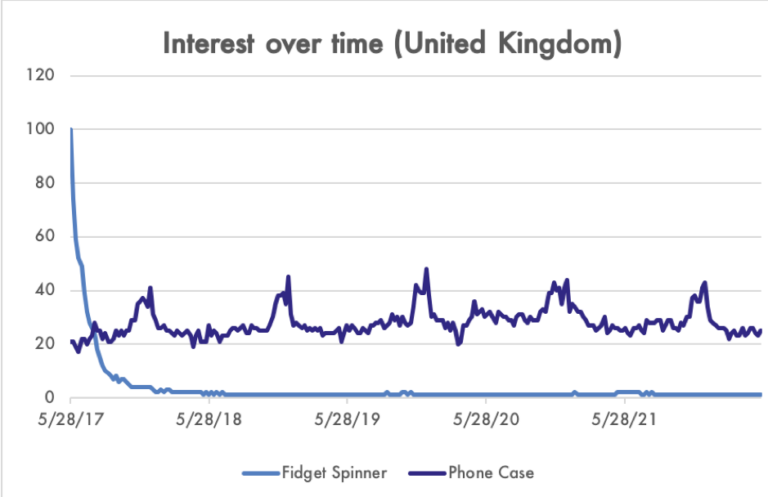This stage is considered to be the final step in stealth mode. It is meant to see whether there is demand in the target audience or not. Upon completion of this stage, you will be in a solid position to register your company and start publicising the idea ahead of launch.
Before we start with how to validate the idea, we would like to stress how important this step is as many businesses that have a merit product never take off, whereas weird products turn out to be very successful. The difference between these businesses, no matter how odd the product is, it’s that their founders have spent time validating their products.
Let’s get straight into it…
Step 1: Conduct a Competitor Analysis
First and foremost, it is essential to look at the market from a macro perspective and understand who provides a similar solution to your target audience. As mentioned in the Selecting your niche product article, the presence of competitors analysis makes your validation process much easier as all the hard work has been done to prove that there is demand for the product. All you have to do is check the level of saturation in the market. If the market is highly saturated, competing in such a market would be highly difficult. An example of a highly saturated market would be fidget spinners.
To conduct a competitor analysis, you will need to look at things like also:
- Pricing: What revenue and, most importantly, profit can you expect to make on this new idea.
- Popularity: Are the items you’re looking into selling best-sellers for your competitors currently?
- Gaps: Is there anything your product or service can do that your competitors can’t offer?
The easiest way to find competitors is to try a quick Google search.
What if there were no competitors in the market? What do you do? Do you need competitor analysis?
You will need to sit down, brainstorm. And answer some questions about the logistics of your product to get validation.
- Who’s your target audience?
- What pain points does your new product idea solve?
- And are you offering the most straightforward solution on the market?
Let’s face it – answering these questions by yourself is somewhat impossible. Let me give you a quick and easy hack to start the validation process.
Reach out to at least seven people in your network (friends & family), show them the product, and ask them the above questions. Once you have collected their answers, you’d be able to identify the target market, such as Age?, Gender?, Interests? Pain Points? etc also.
Based on this data, head over to Facebook Ads and fill in these details to see the actual market size in your area. Facebook Ads is a great tool to test your market size; there is no need to start marketing at this stage.
If the target market is above 10-15k, you can begin the validation process also.
Step 2: Check Google Trends
The next step in validation is to understand whether the product is just a trend. Where demand will naturally fade away or is demand more consistent. The best place to validate this is through Google. Google gives you insight into whether your product is just another trending idea or something that will deliver a solid and steady return over time. Google Trends allows you to track the search volume for a specific keyword in a specified country/region. You can check whether people are starting to talk about your products more regularly. Whether interest is consistent, or excitement is dying down.
As an example, let’s compare the trends for fidget spinners and phone cases.

The figure on the left shows the incredible fall of fidget spinners which never rose again. In the last five years, the overall trend of phone cases remained steady and consistent also. This shows you that opening a personalised phone case store will generate constant revenue engagement for you over the years compared to fidget spinners.
Step 3: Get Customer Feedback
The final step for validation is to get live customer feedback on the product you intend to sell. Again, two types of feedback can be gathered. It depending on whether there are competitors in the market.
If there are competitors, you can check the reviews and testimonials available on Trustpilot or their website. This is an excellent way to see what is going well and what is not. This way, you would be able to improve on what is not going well and master the positives to stand out.
The other option is to distribute free samples to a group of people to get their opinion on the product. However, this time the group of people should not be within your network of friends and family to avoid biased opinions.
Are you feeling validated?
Although the above steps can be time-consuming and require effort. It is one of the best ways to make sure that you invest your time and money in something that will pay off.
After running the above steps, you might discover that the product you selected is not THE product. Do not worry – consider this a success as you have realised early on that this product is not viable in the long term . Do not stop here; go back to your drawing board and think of something new. You already know the process of selecting your niche product and eCommerce model.
Always Remember: imagine, plan, validate, and then implement.






